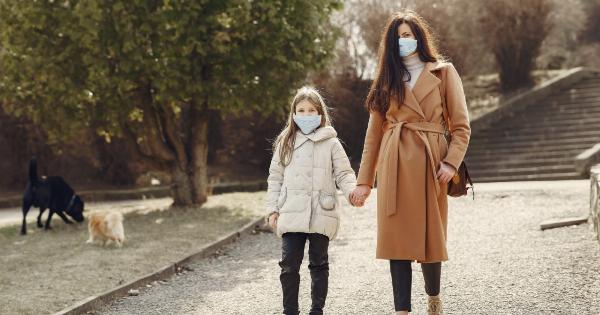In recent years, there has been a significant increase in the number of respiratory illnesses reported worldwide. This rise in respiratory diseases has become a cause for concern among healthcare professionals and researchers.
It is essential to understand the factors contributing to this increase and explore potential strategies to mitigate the impact of these illnesses on individuals and communities.
1. Environmental Pollution
One of the major contributors to respiratory illnesses is environmental pollution. The steady rise in air pollution levels due to industrial activities, vehicular emissions, and other sources has led to a deterioration in air quality.
This polluted air contains harmful particles and toxic chemicals that, when inhaled, can cause damage to the respiratory system. Prolonged exposure to such pollutants can lead to the development of respiratory conditions such as asthma, chronic obstructive pulmonary disease (COPD), and bronchitis.
2. Tobacco Smoking
Tobacco smoke is a significant risk factor for the development of various respiratory illnesses. Smokers are at a higher risk of developing lung cancer, emphysema, and chronic bronchitis.
Moreover, secondhand smoke exposure is equally harmful, especially for young children who are more vulnerable to its effects. The toxins present in tobacco smoke can cause severe damage to the lungs and increase the incidence of respiratory diseases.
3. Occupational Hazards
Many occupational environments expose workers to respiratory hazards, contributing to the rise in respiratory illnesses.
Industries such as mining, construction, agriculture, and manufacturing often expose workers to dust, chemicals, and other harmful substances. Prolonged exposure to these occupational hazards can lead to the development of occupational lung diseases, including pneumoconiosis, asbestosis, and silicosis.
Effective workplace safety measures and regulations are crucial in preventing these occupational respiratory illnesses.
4. Climate Change
The effects of climate change can also impact respiratory health. Changes in temperature, humidity, and weather patterns can trigger or worsen respiratory symptoms in individuals with pre-existing conditions.
Rising temperatures have been linked to increased levels of air pollutants, including ozone and pollen, which can exacerbate respiratory illnesses. Additionally, climate change can contribute to the spread of infectious diseases, such as respiratory viruses, due to altered patterns of disease transmission.
5. Microbial Infections
Respiratory illnesses caused by microbial infections are a significant public health concern globally.
Viruses, bacteria, and fungi can invade the respiratory system, leading to a range of infections, including the common cold, influenza, pneumonia, and tuberculosis. Factors such as overcrowding, poor hygiene practices, and weakened immune systems increase the susceptibility to these infections.
Vaccination against viruses like influenza and pneumococcus is essential in preventing the spread and reducing the burden of respiratory diseases.
6. Lifestyle Factors
Unhealthy lifestyle choices can also contribute to the rise in respiratory illnesses. Lack of physical activity and sedentary behavior can weaken the respiratory system, making it more susceptible to infections and respiratory conditions.
Additionally, a poor diet lacking in essential nutrients can compromise immune function, making individuals more vulnerable to respiratory diseases. Avoiding tobacco smoke, practicing good hygiene, and adopting a healthy lifestyle can significantly reduce the risk of respiratory illnesses.
7. Aging Population
The global population is aging, and respiratory illnesses become more prevalent with age. Older adults often have weaker immune systems and are more susceptible to respiratory infections and chronic respiratory diseases.
Age-related changes in lung function can also contribute to the development of respiratory symptoms and conditions. Adequate healthcare support and preventive measures are crucial to manage respiratory illnesses in the elderly population.
8. Urbanization and Poor Housing
Urbanization and poor housing conditions can have detrimental effects on respiratory health.
Overcrowding, inadequate ventilation, and exposure to indoor pollutants such as mold, allergens, and household chemicals can increase the risk of respiratory illnesses. These conditions are more prevalent in densely populated urban areas and disadvantaged communities. Improving housing infrastructure and promoting awareness regarding indoor air quality can help address this issue.
9. Allergens and Asthma Triggers
Allergens play a significant role in triggering respiratory illnesses, particularly asthma. Common allergens like dust mites, pollen, pet dander, and mold spores can cause allergic reactions in susceptible individuals.
These allergic reactions can lead to asthma attacks, characterized by wheezing, coughing, and difficulty breathing. Identifying and avoiding allergens, proper asthma management, and educating individuals about asthma triggers are essential in reducing the burden of respiratory illnesses.
10. Socioeconomic Factors
Socioeconomic factors can influence the prevalence and impact of respiratory illnesses.
Limited access to healthcare services, poor living conditions, low socioeconomic status, and lack of education contribute to the rise in respiratory diseases, especially in vulnerable populations. Addressing these socioeconomic determinants of health through improved healthcare infrastructure, health education, and social support can help reduce the burden of respiratory illnesses.






























